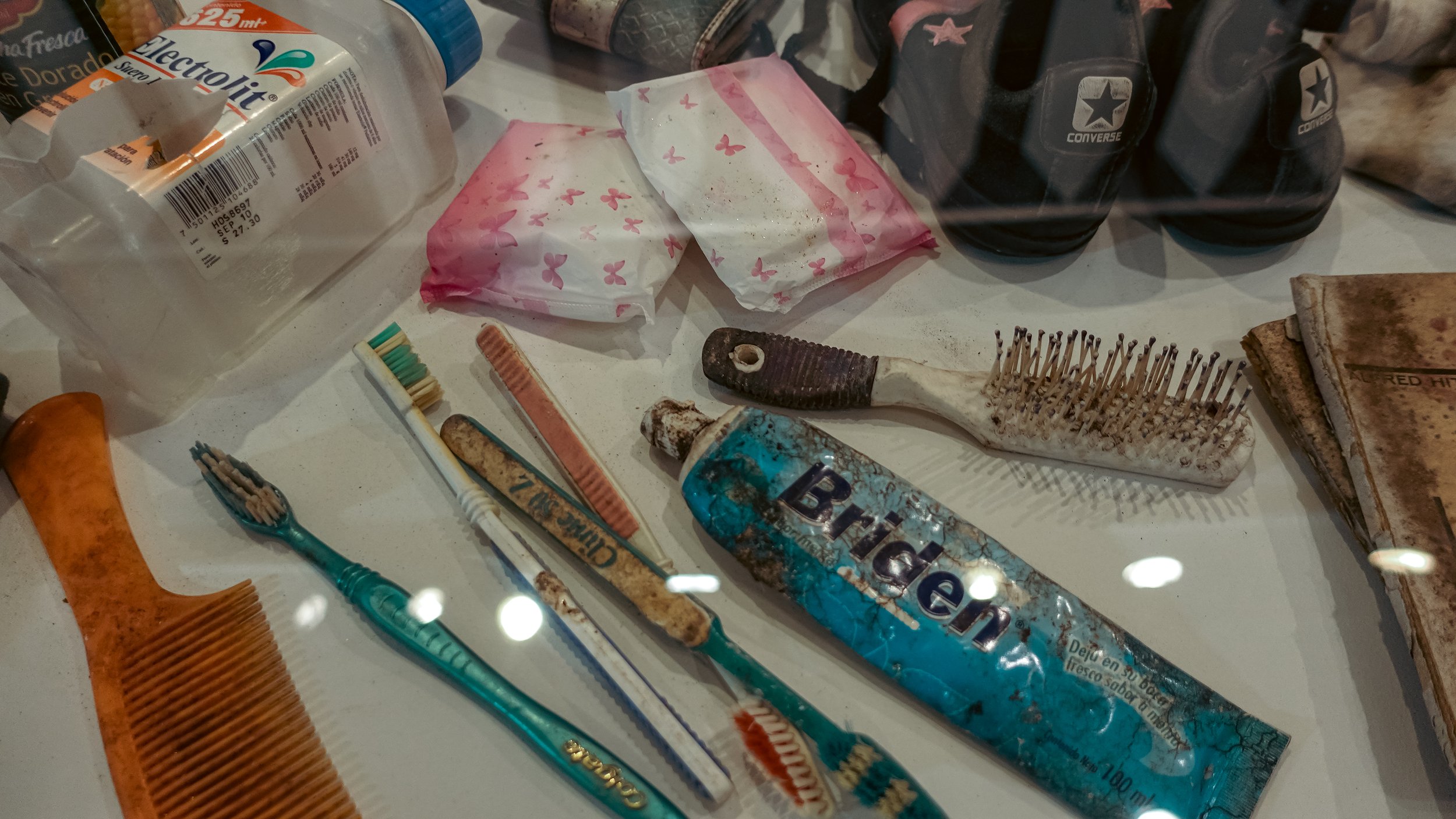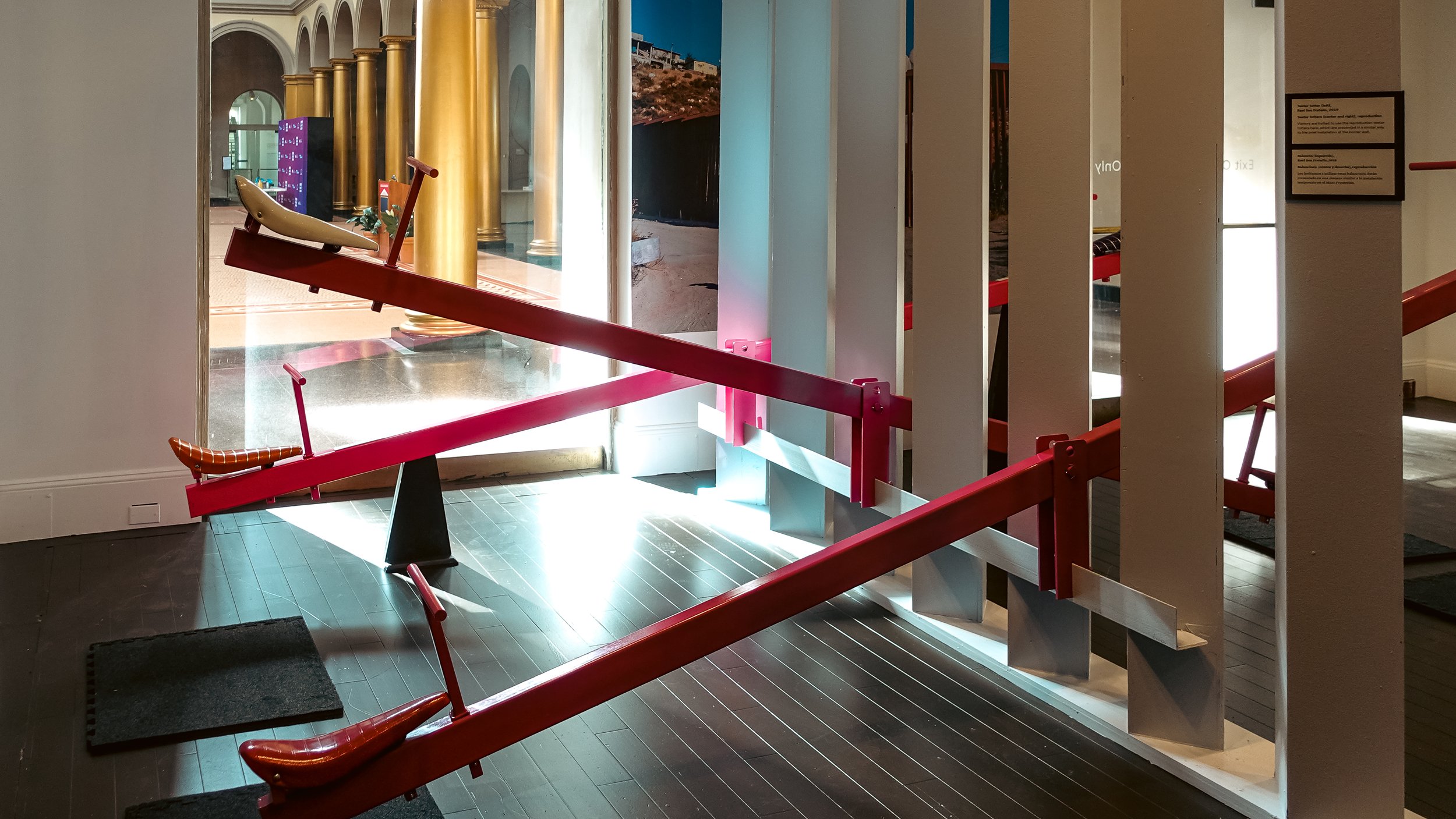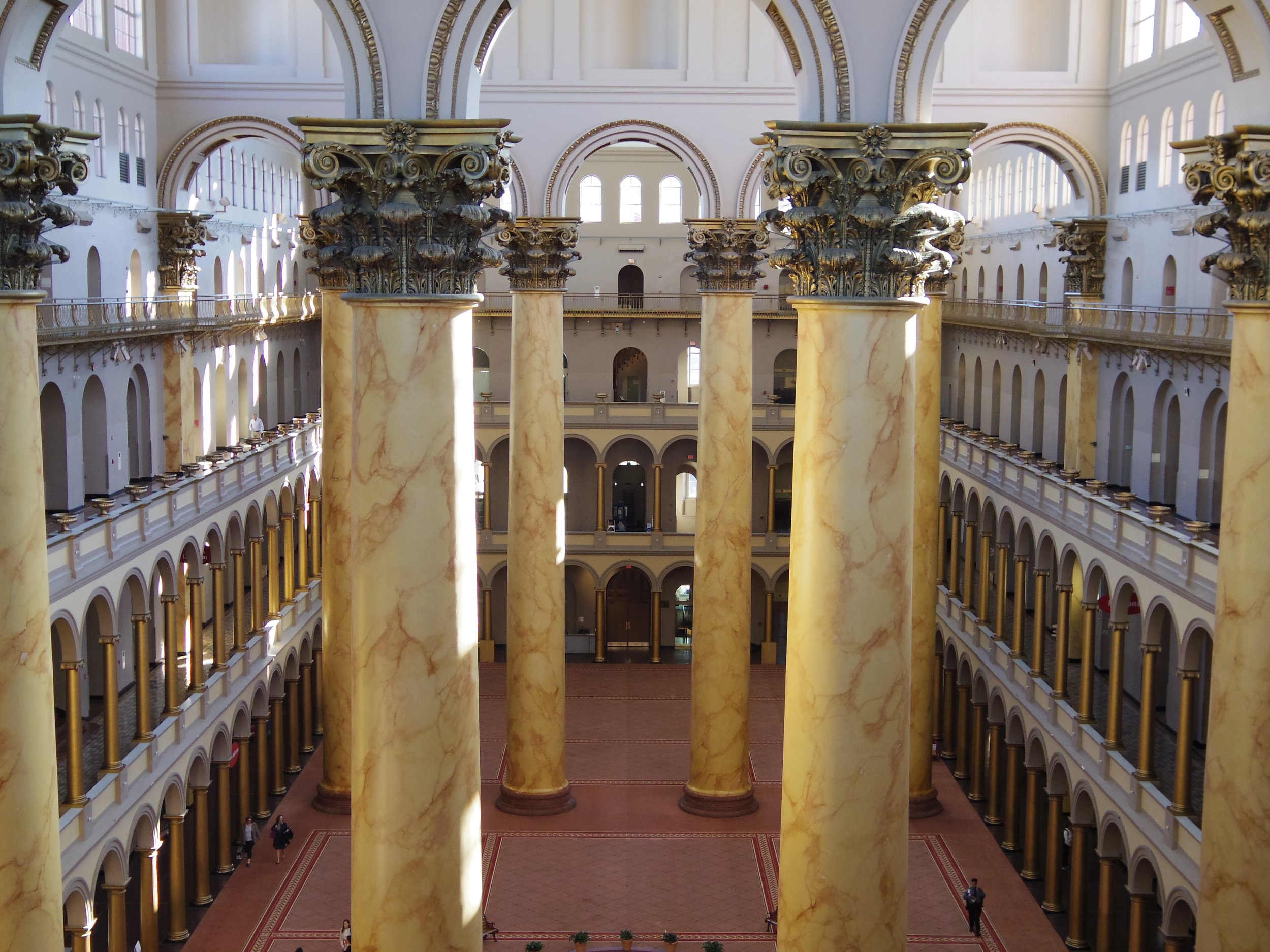The National Building Museum is open Friday-Monday 11am-4pm. 401 F Street NW.
What is a border? I often think about borders living here in the District of Columbia. Since Virginia, Maryland, and the District comprise a dense and diverse metropolitan area, much attention is paid to borders, what living on one side or the other means for your life, and what those borders say about us depending on where we live and work relative to them. Even within DC itself, political borders like Wards and Quadrants are significant markers of identity and policy.
The Wall/El Muro: What is a Border Wall? exhibition at the National Building Museum is both a swift historical dive into the U.S.-Mexico border as part of our built world, as well as an introduction to understanding the impact of the infrastructure itself. This show is presented in English and Spanish.
The exhibition takes a wide view at the outset, helping visitors define what a border actually is and displaying a fascinating map (c. 1728) of Spanish North America denoting the borders of American Indian tribes before the British, French, Spanish, and others divided up the continent, eventually morphing into the national borders we have today. Of course national borders are not new, and not exclusive to North America, a fact smartly acknowledged here in the first bay, visualizing border walls and barriers across the globe.
Border wall prototypes c. 2019.
From there the focus is in the U.S.-Mexico border, and not just the physical manifestation of the border wall. The exhibition has a running timeline from the late 1700s to present day on border policy, popular fears around immigrants and immigration, and national immigration policy itself.
There is a good division among storytelling about the history of the border wall, examination of the physical infrastructure of the many types of walls & barriers, and the impact of the existence of borders including on the people who cross or attempt to cross, the mechanisms around how we ask people to access borders, and the results of the often dangerous and violent process of interacting with the border.
Migrant belongings left behind in the Sonoran Desert.
Complementing the maps, timelines, and infographics are several extraordinary objects.
One ordinary chain link fence with barbed wire atop stood out even before I entered the exhibition because I could see it from the Museum's Great Hall, which has windows into the show. This small section of fence was used by U.S. authorities in 1950 as part of a border wall between Mexico and the U.S. state of California. It was installed in 1950. This fencing had been used before, though. During World War II, it separated internees from the outside world as they were detained in the Crystal City Alien Enemy Detention Facility in Texas. A fence serving two borders, within a different time, space, and affect.
Another was the bright pink teeter-totter, a universal children's play thing and simple machine, but also a protest. The teeter-totter brought children together through the border fence, with each half of the lever on the opposite of the border wall between Mexico and the United States. A short accompanying video shed light on the artists and the installation which was located near El Paso, Texas.
I walked away still thinking about the essence of what it means to have national borders, state borders, even local neighborhood borders. So many questions are still on the table after seeing this exhibition: Do borders necessarily beget violence? Who decides where borders are located? In which other forms, besides lines on a map or fences in the ground do we enforce borders? What would a borderless world look like? And so many others. In this way, I consider the exhibition a success.
The Wall/El Muro opens on Saturday November 6, 2021 and closes one year later on November 6, 2022. It;s located on the first floor of the National Building Museum at 401 F Street NW in downtown Washington, DC. The Museum is currently open Friday-Monday 11am-4pm. Tickets to the museum cost $10 for adults. OYu can still enter and view the Great Hall for free, which I highly recommend!
The Museum’s Great Hall is open to the public whenever the museum is open.
This exhibition preview was made possible by montly supporters on Patreon. Thanks to you all! Get weekly history posts, photos of DC’s most interesting places, and as more museums reopen, exhibition previews and reviews. Check it out—> Patreon: Attucks Adams.









